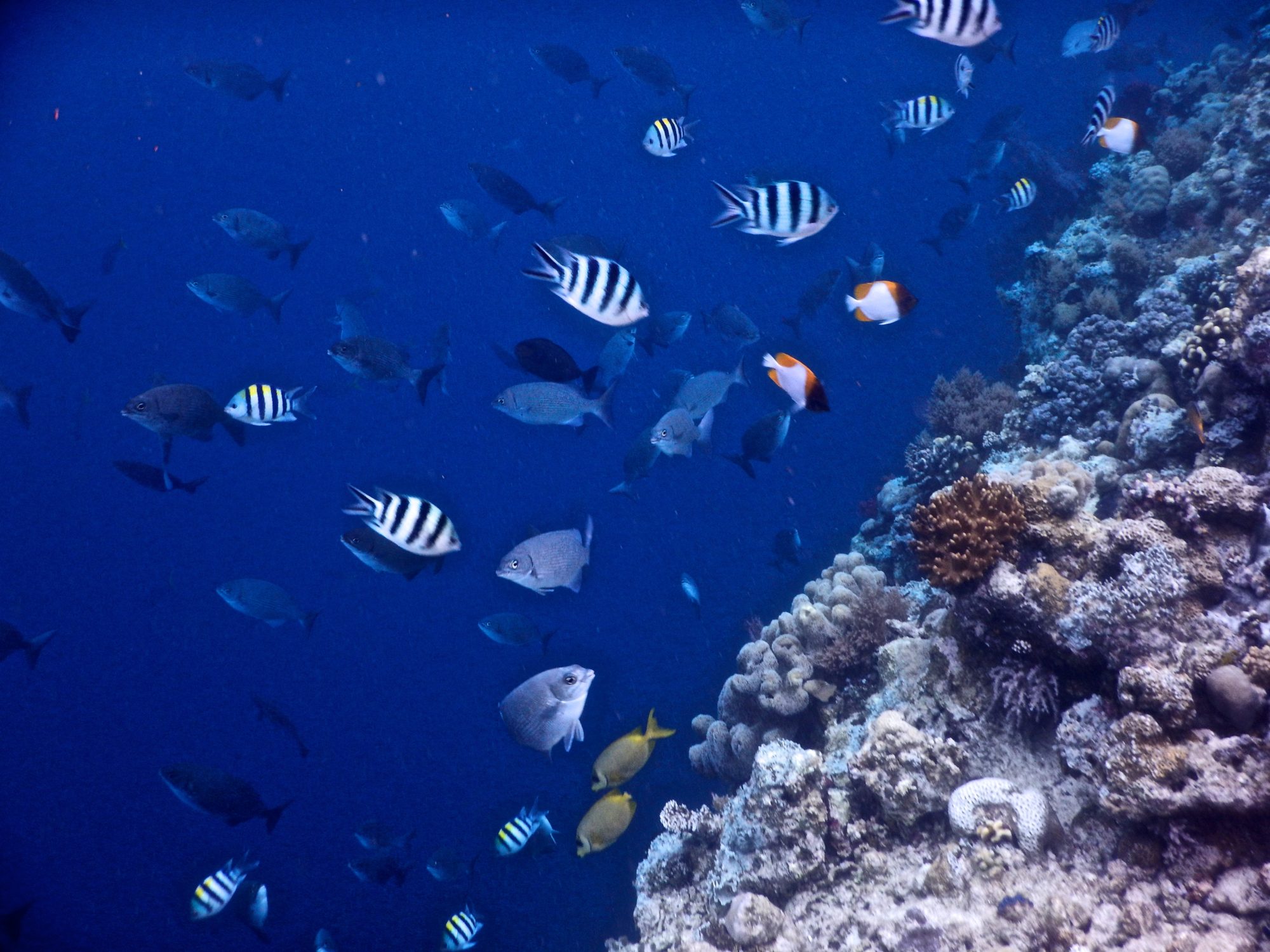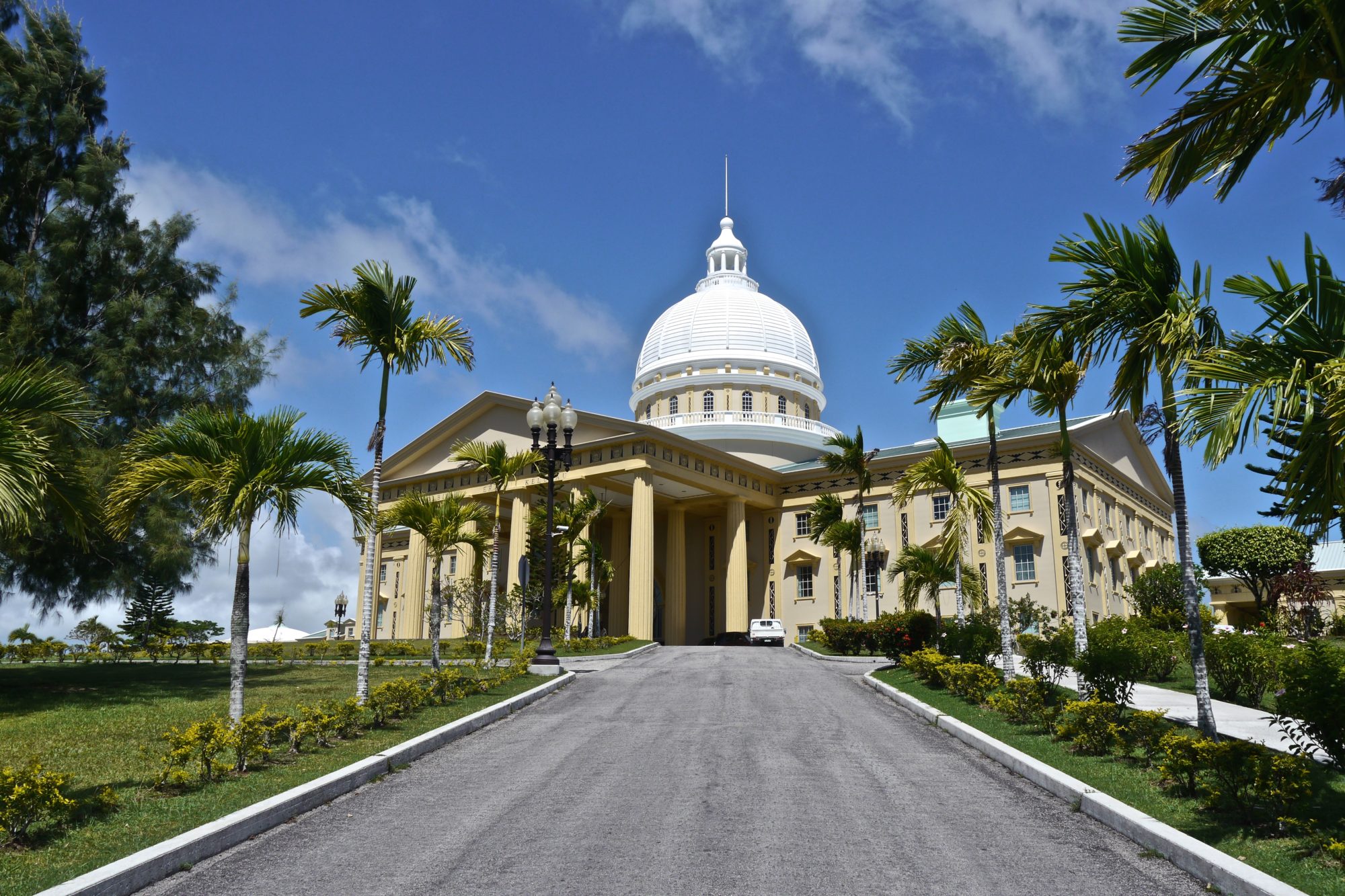
Driving around Babeldaob: Palau’s Largest Island
Babeldaob is the largest island in Palau and home to tiny Ngerulmud, Palau’s capital city. Beautiful rolling hills blanket this dense, forested island. Despite being Palau’s largest island and only a stone’s throw away from Koror (the country’s largest city), Babeldaob is underdeveloped, sparsely populated and often relegated to an afterthought in visits to the country.
After consecutive excursions to Jellyfish Lake and the South Rock Islands, Melissa and I spent our final day in Palau exploring Babeldaob, the archipelago’s largest island. Since joining a day tour to the island would have cost us upwards of $100 per person, we teamed up with another guest at our AirBnb and rented a car to tour the island.
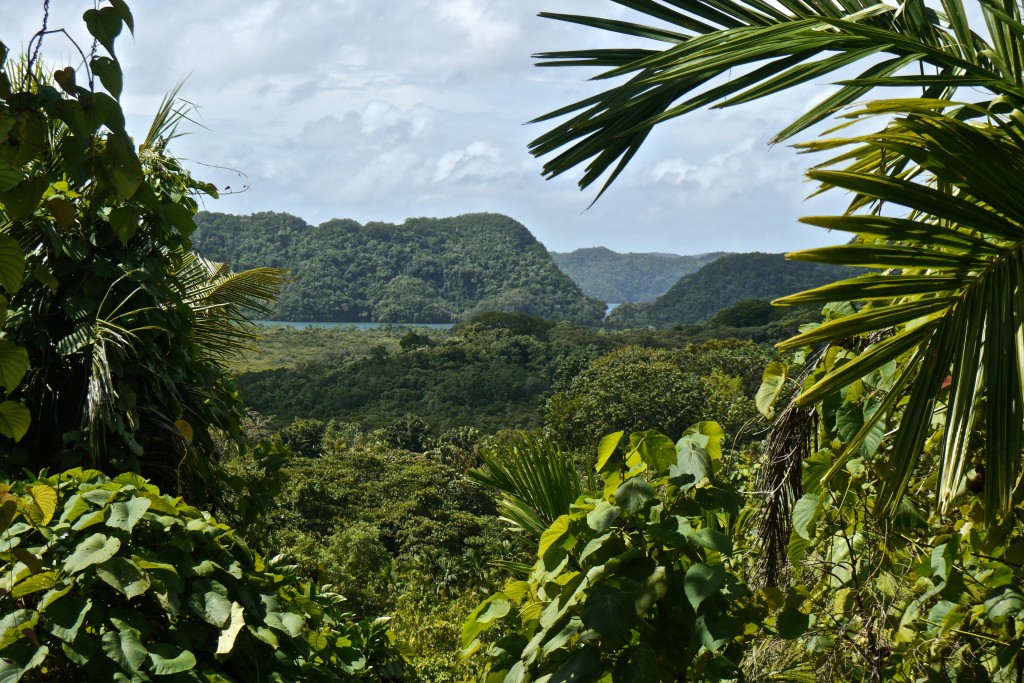
Our Self-Guided Day Tour of Babeldaob Island
Renting a car to drive around Babeldaob proved to be a good idea. It allowed us the freedom to choose our own itinerary, as well as the ability to discover the quirky and eccentric attractions of Palau’s largest island on our own terms.
Our self-guided day trip around Babeldaob consisted of quirky attractions that rarely make it onto Palau travel itineraries. These destinations–some that we’d researched and some that we discovered by chance–made for an informative, scenic and unexpected afternoon.
-
Japanese Historical Relics on Babeldaob
The first roadside stop on our drive around Babeldaob, was a Japanese Administration Center from WWII. A deserted and ruined building with rusting military equipment, the building lies crumbling amidst trees and tall grasses.
During WWI, Japan annexed Palau from Germany and occupied the islands until the Battle of Peleliu in WWII. The Battle of Peleliu occurred in 1944, when US troops fought Japan over influence in the Pacific Theater. After two months of fighting, US and Allied Forces won the battle. To this day, the Battle of Peleliu remains one of the deadliest turf wars in US history and remnants of the war between Japan and the US still lie scattered about many of Palau’s islands.
From the small informational placard adjacent to the ruins, we learned that the structure served the Japanese during the war. Yet, aside from the placard. we found very little other information about the structure.
A second sign next to the building informed visitors that taking pictures would incur a $25 fee. But the sign was only written in Chinese, so I took out my camera and snapped a few photos.
In mere seconds, a throng of men appeared from the bushes, chasing our car and demanding we pay money to visit the monument.
We quickly put down our cameras, backed away from the building and continued down the road.
-
Capitol Building in Ngerulmud, Melekoek State
After being chased down by security guards for attempting to take photos of the ruined army base, we headed toward Palau’s capitol building–an imposing and impressive structure that rises above the verdant jungle and towers over everything in its vicinity.
Never mind that the capital city of Ngerulmud has a population of less than 400, making it the smallest capital of any independent country in the world. (Yes, it is even smaller than the Vatican City). Or that the city of Ngerlumud is so small we never actually were able to find it. Never mind that there are only 20,000 residents in the entire country of Palau–making it one of the smallest countries in the world by population. Or that the small island nation is among the most remote on Earth.
Palau’s capitol building is so impressive and stately that one would think it belonged to a wealthy and powerful nation.
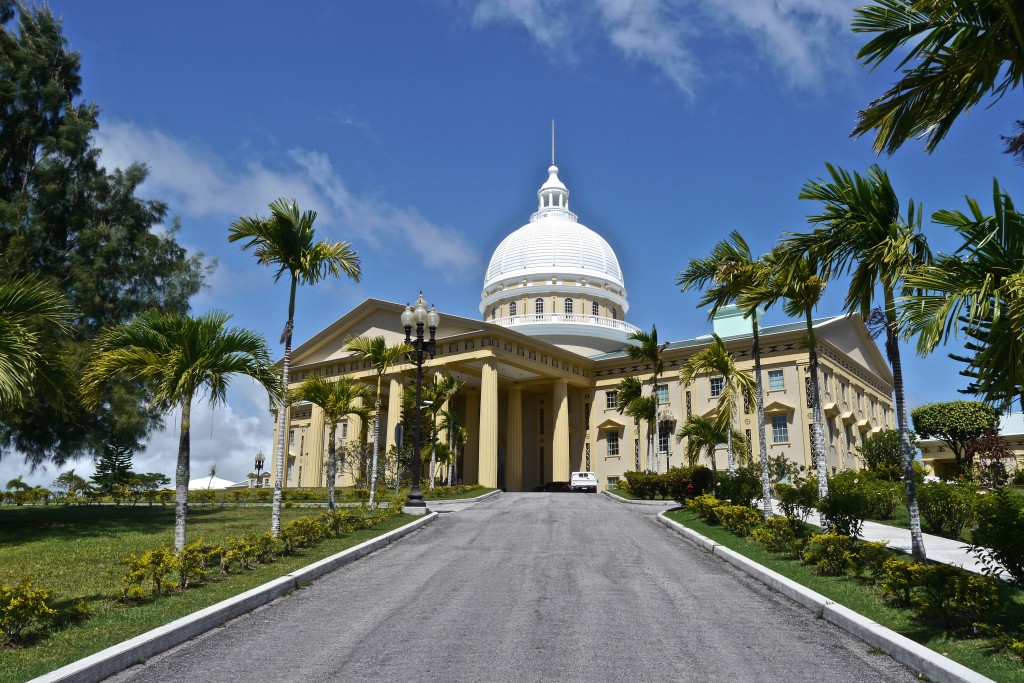
We spent about an hour touring the inside of Palau’s capitol building and taking in the ocean views from its courtyard. Then, we continued our self-guided tour of the island with a visit to the prehistoric stone monoliths of northern Babeldaob.
-
Badrulchau Archeological Site on Babeladaob
The Badrulchau Archeological Site dates back to 161AD and comprises about 40 carved monoliths that have, over time, lost most of their distinguishing features. Today, a few of the stones vaguely resemble heads, though we had to stretch our imaginations a bit to see their features.
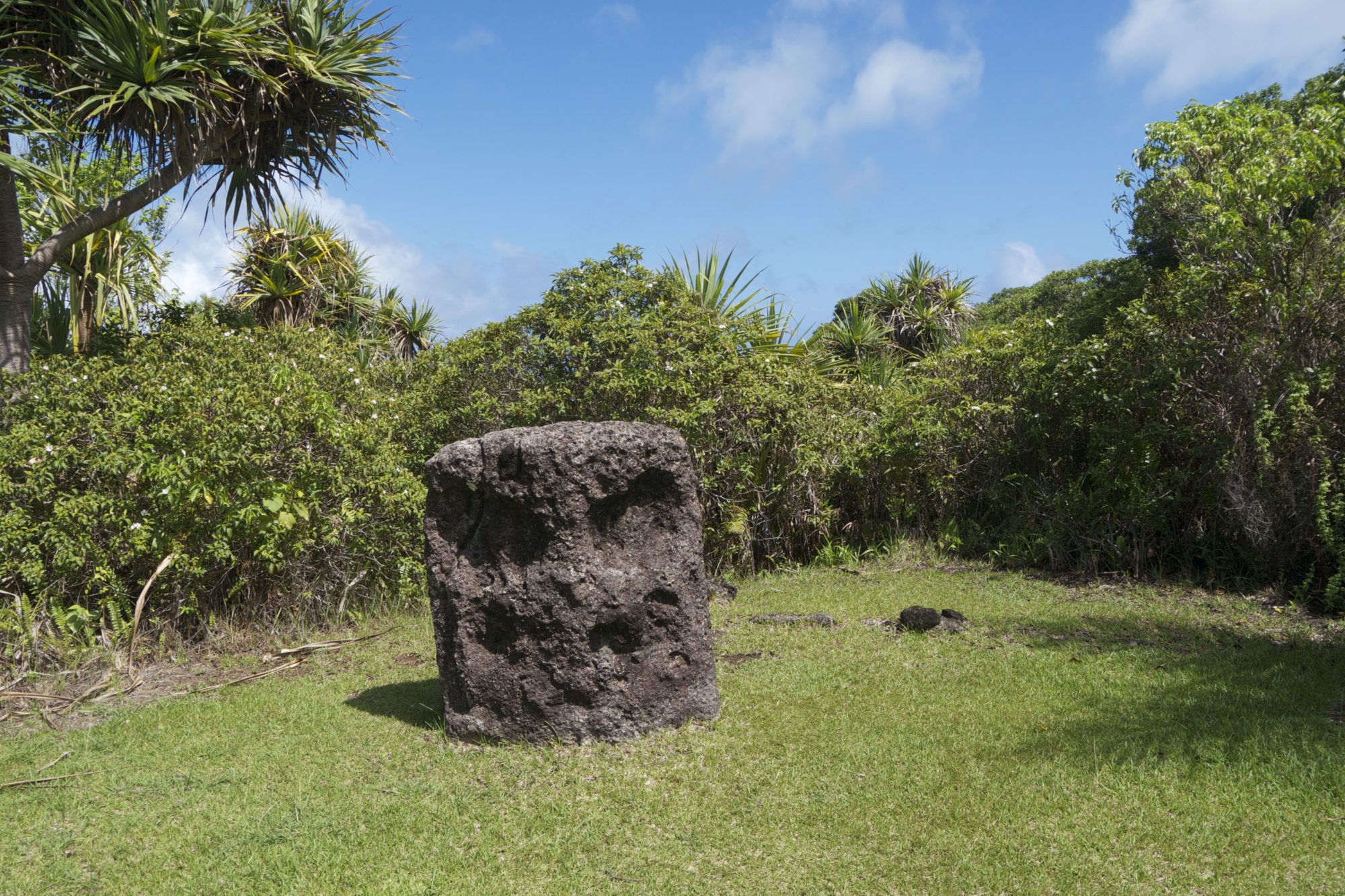
What makes the monoliths all the more intriguing, is the fact that the stones do not originate in Palau. This means that, as with the moai of Easter Island, the material used to build the Badrulchau statues was imported from elsewhere.
Little is known about Palau’s early history and, as a result, the country’s largest archeological site is shrouded in mystery.
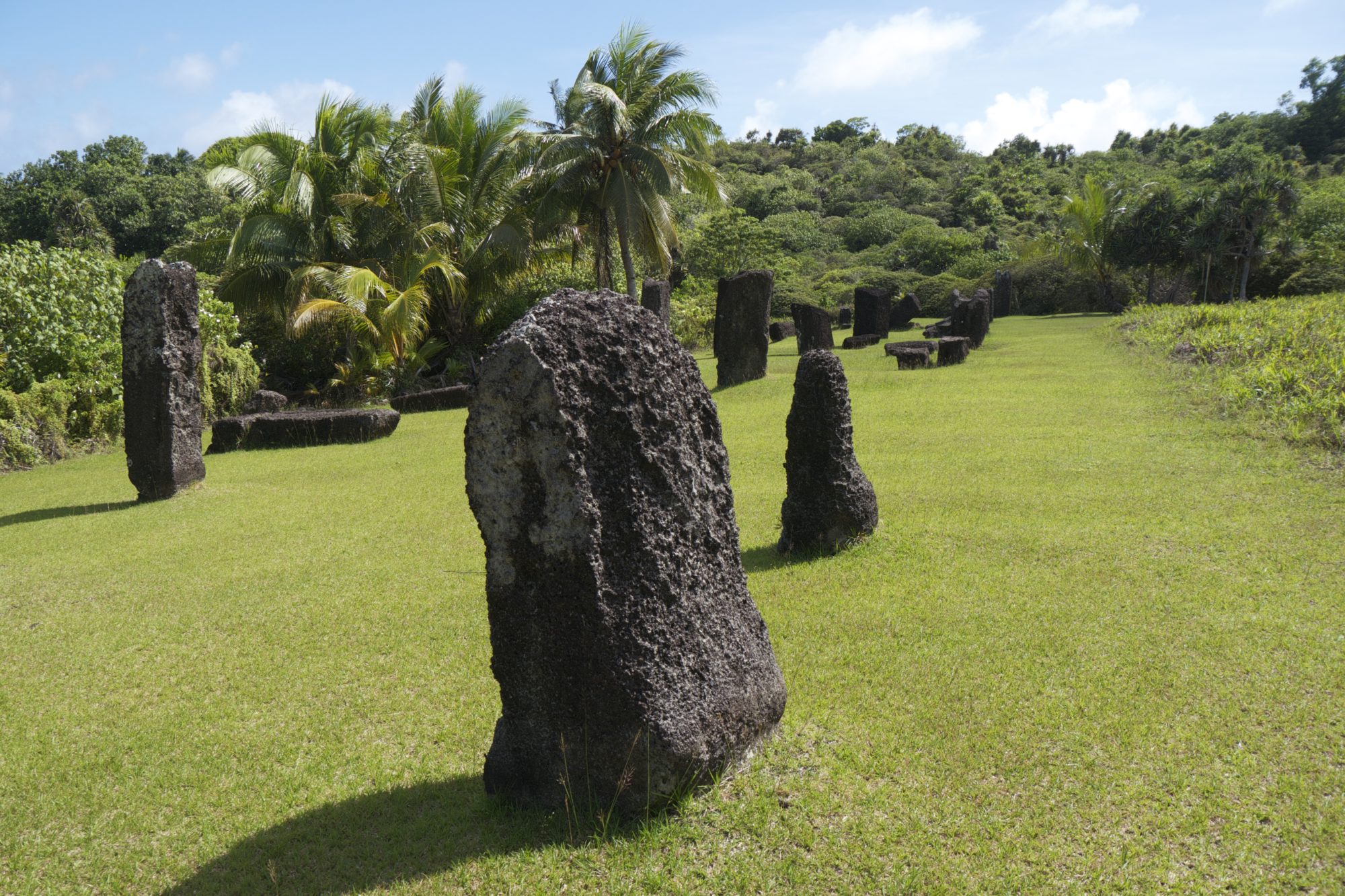
It is worthwhile to visit Badrulchau for the beautiful ocean views as much as for the megalithic stones. Colorful fruits and flowers dot the lush vegetation and a patchwork of turquoise and sapphire water forms a jaw-dropping backdrop to the archeological site.
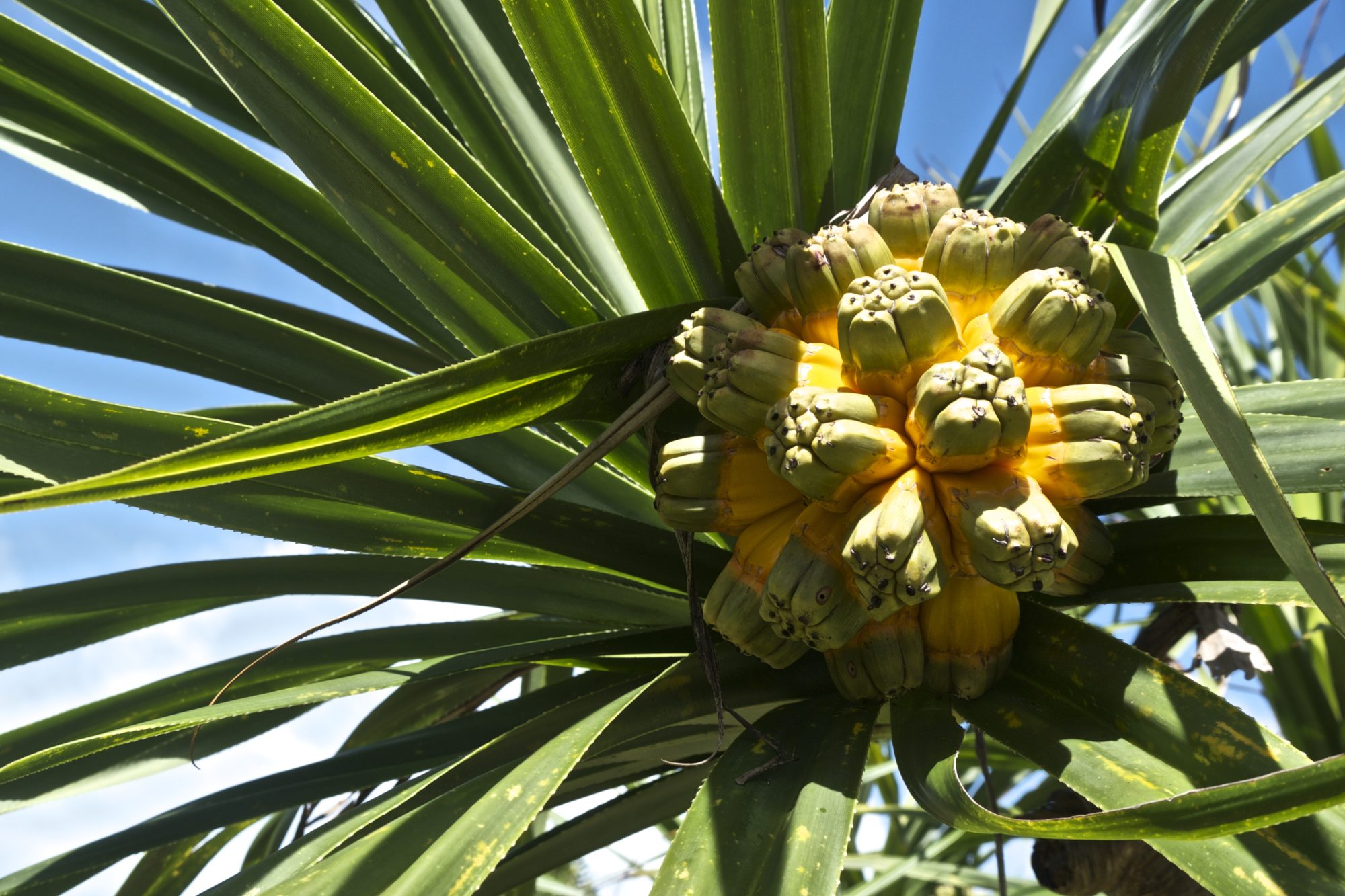
-
Eco-Theme Park and Waterfall on Babeldaob Island
Though we enjoyed our visit to Ngerulmud and Badrulchau, the highlight of our day trip around Babeldaob was undoubtedly our visit to the quirky Eco-Theme Park.
The Eco-Theme Park is a popular stop along the Babeldaob circuit and is situated in a dense jungle that surrounds the Ngardmau Waterfall. At the entrance to the park is a small visitor center of sorts, with a few caged birds, a giant teddy bear in a harness and a rickety-looking monorail that is seemingly powered by a lawnmower motor.
Imagine the exact opposite of a Disney roller-coaster, and that is what the theme park’s monorail looks like.
With package tourists from China and Japan flooding the small conglomeration of islands, the Palauans have become increasingly creative about finding ways to get their hands on tourist dollars. Every point of interest–from beaches to historic monuments and from museums to natural attractions–seemed to require pricy fees. And the theme park was no exception.
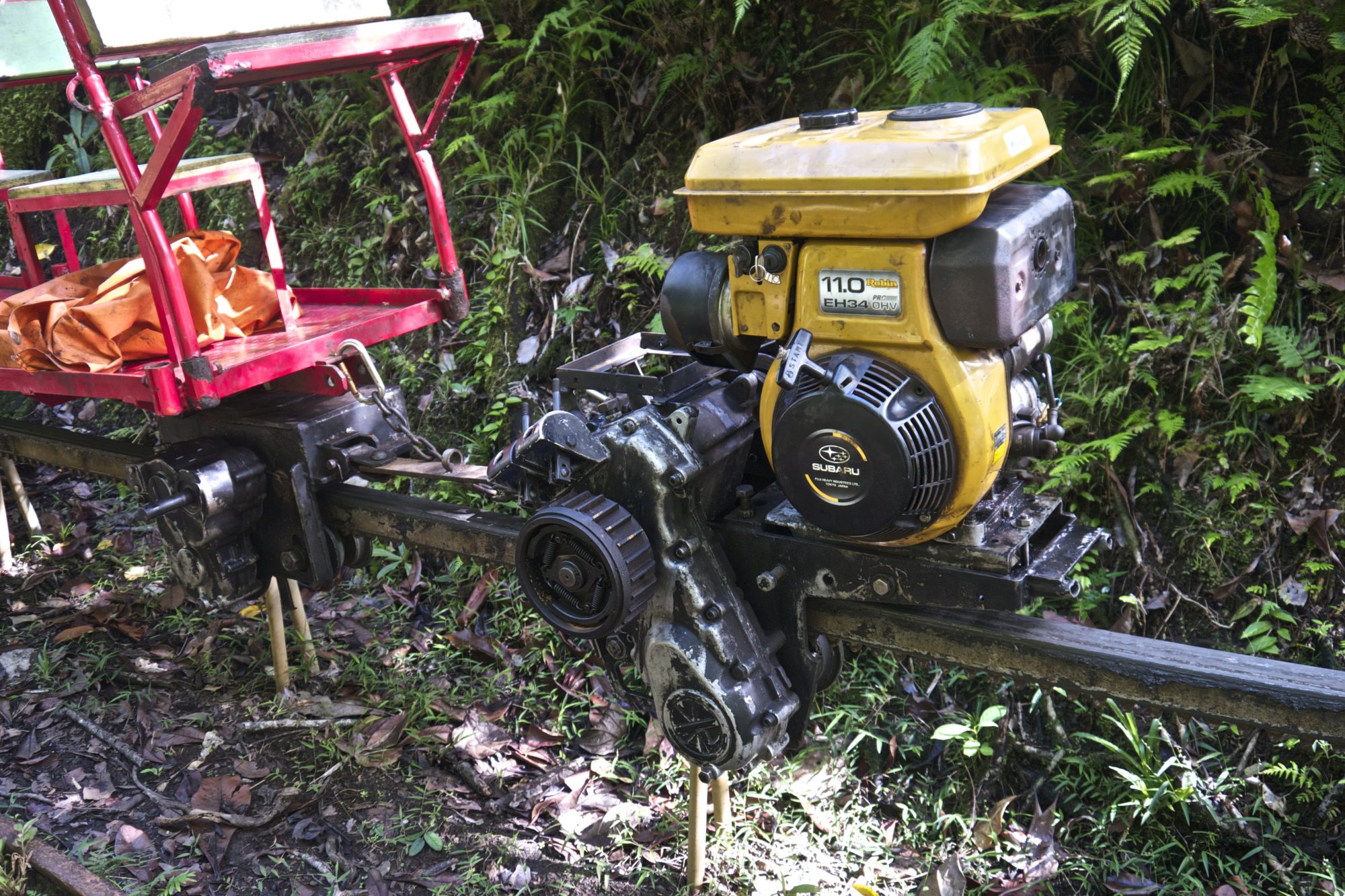
We immediately agreed that zip-lining was out of our price range, so we paid the $10 entrance fee and decided, instead, to spend our time enjoying the waterfall. There are two different ways that one can reach the Ngardmau Waterfall–by foot or by the aforementioned jungle monorail.
We chose to walk, since taking the monorail would cost us upwards of $30 each.
A treacherous hiking path parallels the monorail tracks and led us down a slick rock face, past rushing streams. We followed the monorail tracks through the jungle and laughed every time we heard the train’s little engine sneak up behind us.
Our fascination with the impromptu roller-coaster must have been apparent for, after having walked half the way to the waterfall, one of the park attendants picked us up for a free ride.
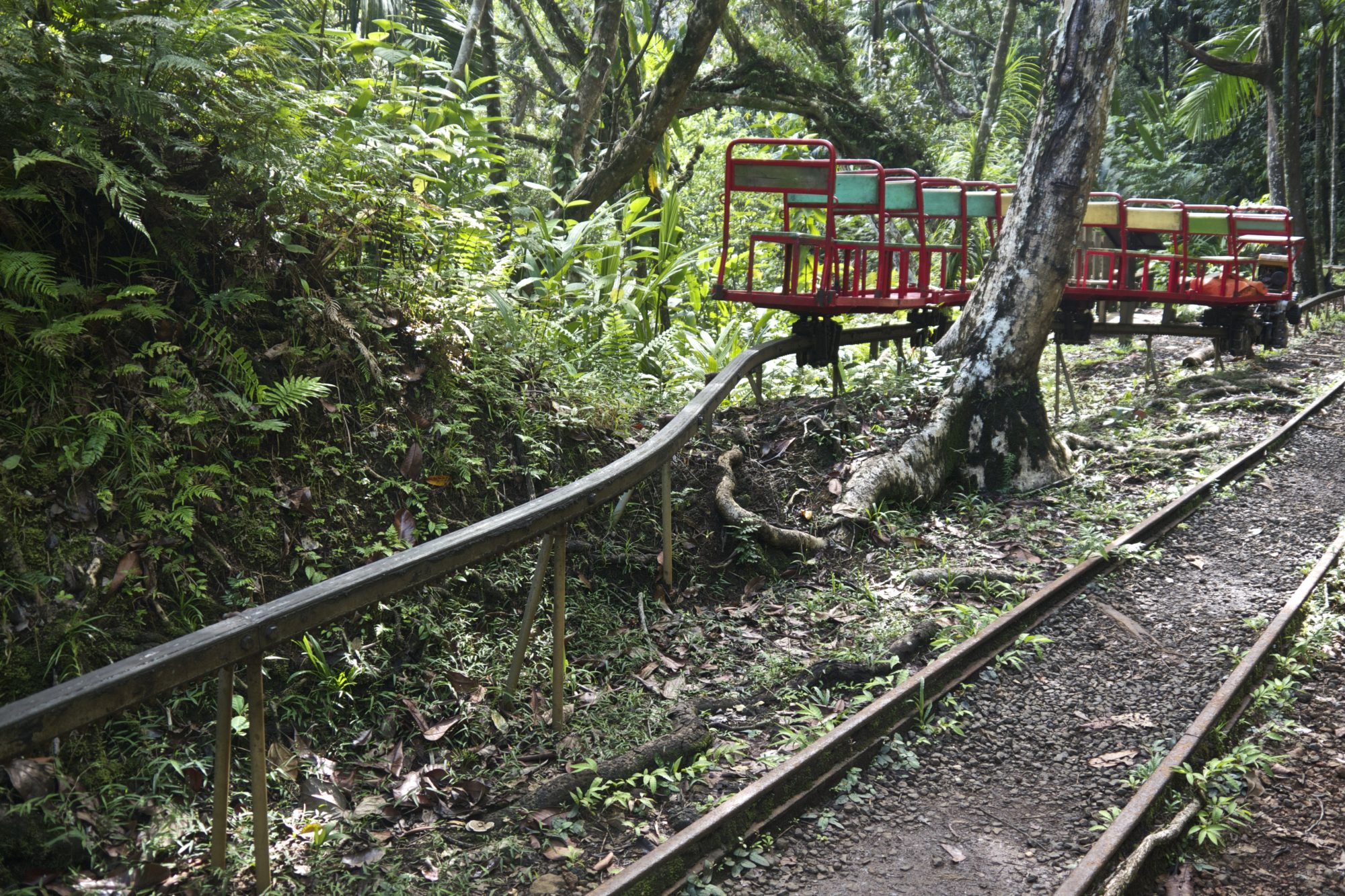
Atop our little roller-coaster, we climbed hills, crossed rivers and cut through thickets of trees. The monorail seemed to be held together by threads, making our overland excursion one of adventure and laughter. The train’s rickety seats wobbled below my weight and felt as though they would collapse at any moment.
All the while, the lawnmower-like locomotive propelled us forward–at what felt like 5 miles an hour–until we reached Ngardmau Waterfall.
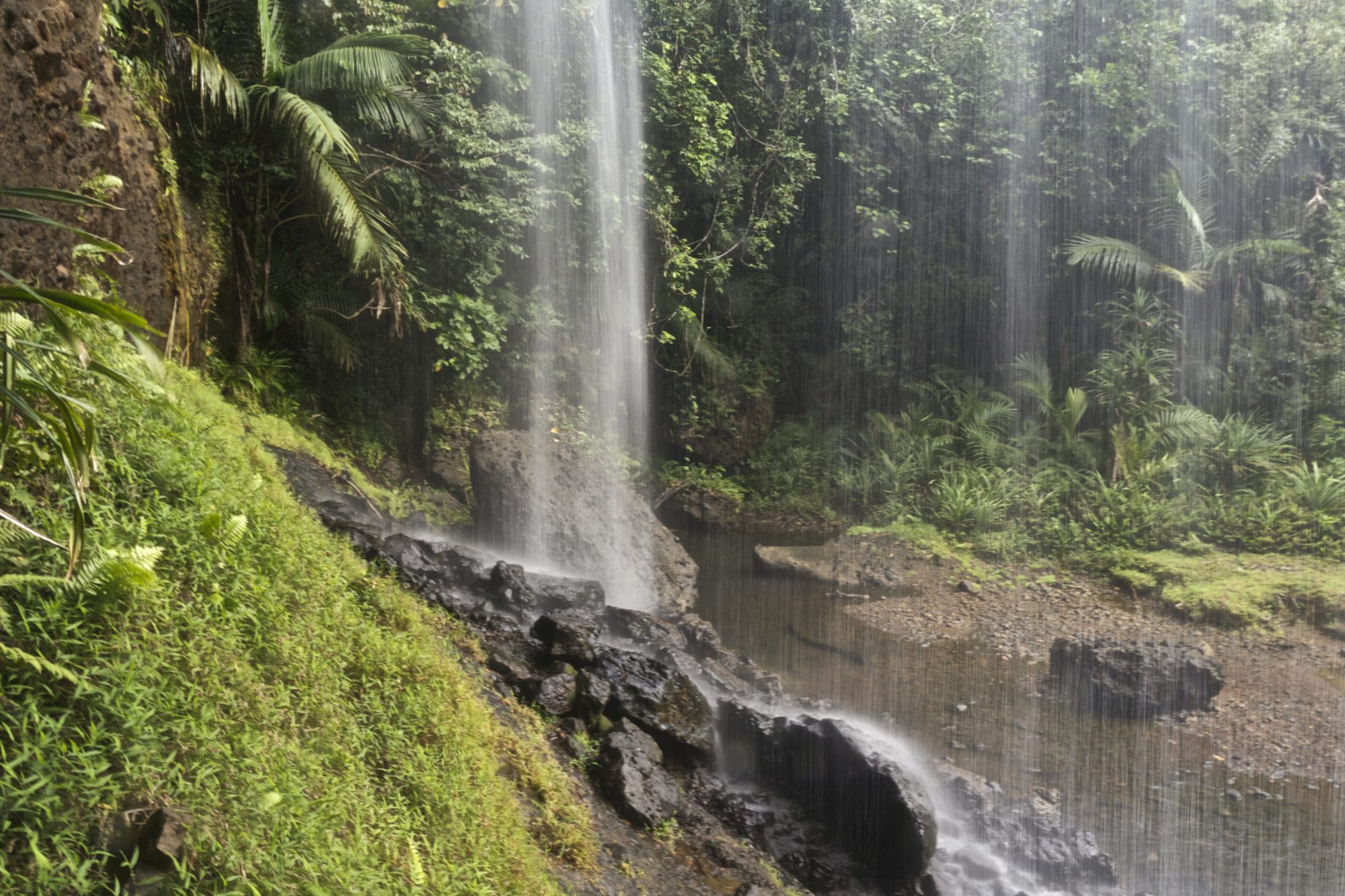
By the time we reached the waterfall, most other tourists had already left, so we we were able to have the site mostly to ourselves.
We cooled off in the water and climbed behind the waterfall, enjoying the solitude and natural beauty of this freshwater swimming-hole.
***
Traveling to Babeldaob was full of surprises. Home a quirky theme park, monolithic statues, WWII relics and an imposing capitol building in the world’s smallest capital, there are plenty of things to do in Babeldaob on a self-guided day trip.
Most would surmise that a visit to Palau is not complete without discovering the country’s underwater world and snorkeling in Jellyfish Lake. And I agree. But so too, do I think that no visit to the Palau would be complete without a visit to the bizarre and often quirky above-water attractions of the country’s lush and tropical interior.

